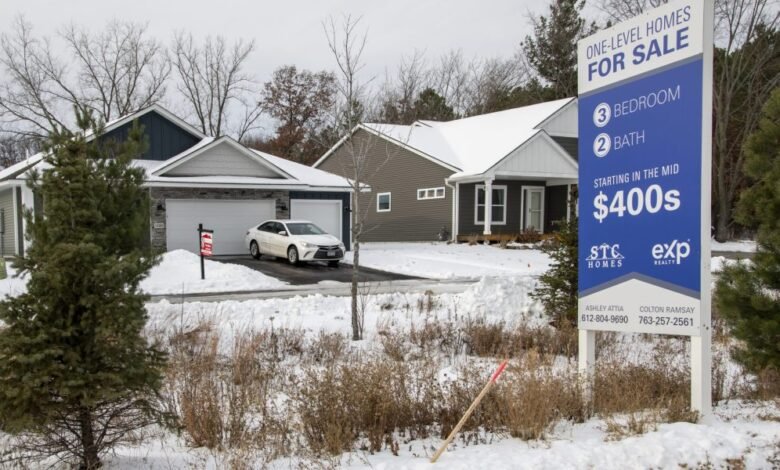

Just when the U.S. housing market showed signs of thawing, brutal new data revealed a pretty dysfunctional market in 2023: existing home sales dropped to their lowest level since 1995 at just 4.09 million transactions. That’s a worse figure than the entire Global Financial Crisis, famously caused by a housing bust that put millions of people underwater on their mortgages.
In December 2023, existing home sales slipped 1% from November to a seasonally adjusted annual rate of 3.78 million, according to National Association of Realtors’ data released Friday. From the prior year, the rate of sales fell 6.2%. By this measure, current market conditions are seemingly even worse than when the housing bubble burst.
“Even during the 2008 housing bust, home sales weren’t as weak as they were in 2023,” Holden Lewis, a senior writer on mortgages at NerdWallet, said in a statement shared with Fortune. “The slow pace of sales can’t be blamed on lack of demand; there are plenty of renters who wish they could own.”
Instead, he argues, the issue is a lack of supply. Inventory levels are 36% lower than pre-pandemic levels, according to Zillow. Just one million previously owned homes were for sale at the end of December 2023, while existing home inventory was at 1.39 million in December 2019, Lewis said. Low inventory levels have been particularly tough on millennials and other younger buyers, Bright MLS chief economist, Lisa Sturtevant, said in a statement shared with Fortune. There is just 3.2 months of supply in the housing market, she adds, while a “balanced market” typically has four to six months of supply.
“Homeownership rates for this group remain lower than they were for prior generations, which indicates a significant level of pent-up demand,” she said. “Prospective homebuyers have been shut out of the market by a lack of inventory. If there had been more listings on the market in 2023, we would have had more home sales.”
But a drop in mortgage rates could improve inventory levels this year, and in turn, existing home sales as the lock-in-effect (the phenomenon of homeowners refusing to sell their homes for fear of losing their low mortgage rates) eases. In fact, NAR’s chief economist Lawrence Yun expects home sales to improve this year.
“The latest month’s sales look to be the bottom before inevitably turning higher in the new year,” Yun said in the release. “Mortgage rates are meaningfully lower compared to just two months ago, and more inventory is expected to appear on the market in upcoming months.”
Mortgage rates have already fallen considerably from their recent peak at just above 8% in October 2023; as of the latest reading, the average 30-year fixed mortgage rate was 6.89%. Still, it seems the lock-in-effect hasn’t eased as much as expected. In November 2023, existing home sales rose slightly, ending five consecutive monthly declines.
“If interest rates continue to fall this year, more people will list their homes for sale, and we will see a healthy rise in sales,” Lewis said.
To make matters worse, the median existing-home sales price rose 4.4% from December 2022 to $382,600, marking the sixth consecutive month of year-over-year price increases. “Obviously, the recent, rapid three-year rise in home prices is unsustainable,” Yun said.
“If price increases continue at the current pace, the country could accelerate into haves and have-nots,” he continued. “Creating a path towards homeownership for today’s renters is essential. It requires economic and income growth and, most importantly, a steady buildup of home construction.”
Source link




